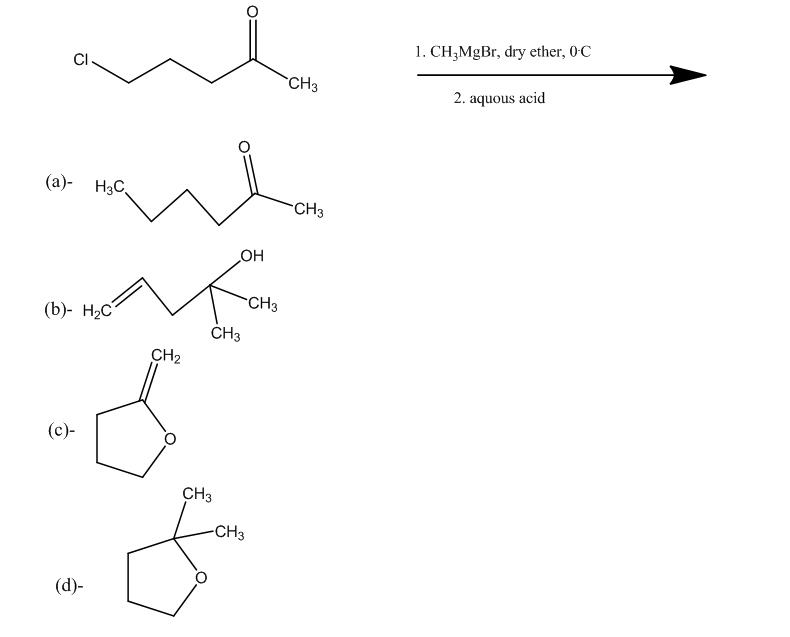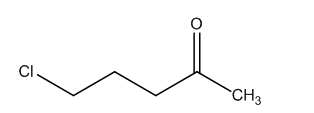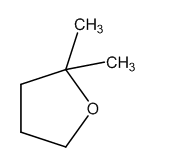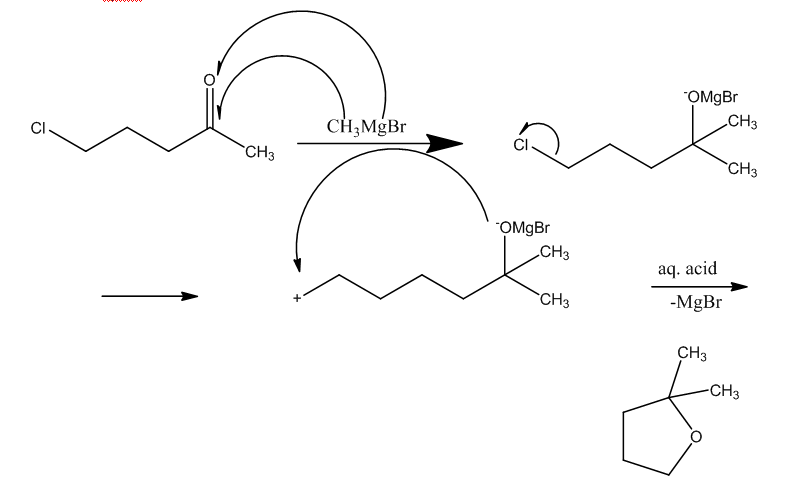
The major product in the following reaction is:

Answer
122.4k+ views
Hint: First when the Grignard reagent acts as catalyst the ketone group will be attacked changing into a complex. Then with the help of aqueous acid, the chlorine group will leave with the Grignard group.
Complete step by step answer:
First, let us see what is the reactant?

This compound is 5-chloropentan-2-one. This is the compound that comes under the ketonic group with chlorine as the substituent at the 5th place.
Now, the catalyst mentioned are (i)- \[\text{C}{{\text{H}}_{3}}\text{MgBr}\]
This is called the Grignard reagent. They react with aldehyde, ketones, and ester to form alcohol in two steps. The first involves the nucleophilic attack of the Grignard reagent to the carbonyl group to form an adduct. The second step involves hydrolysis of the adduct with water or preferably with dilute hydrochloric acid or dilute sulphuric acid to form an alcohol.
(ii)- aqueous acid
This catalyst helps to remove the negative part of the chain-forming specific product. because acid has hydrogen ions which combine with the negative part to form the by-product.
Now when the reaction takes place,

The product formed is

Let us understand the mechanism:
First, the Grignard reagent attacks the ketonic group, this leads to the breaking of double bond and formation of OMgBr complex. The other part of the Grignard reagent i.e. methyl group will attach to the carbon atom having the double bond.
In the next step, the chlorine bond will break which leads to acquire a positive charge on the carbon atom.
Now, the negative charge of the oxygen atom and positive charge of carbon atom will combine to form a cyclo structure.

Therefore, Option D is correct
Note: You may get confused between option (b) and (d) because in the catalyst Grignard reagent is given which mainly forms the alcohol and in all the options, only option (b) contains the alcohol group. But due to the presence of aqueous acid, it will form a cyclic structure.
Complete step by step answer:
First, let us see what is the reactant?

This compound is 5-chloropentan-2-one. This is the compound that comes under the ketonic group with chlorine as the substituent at the 5th place.
Now, the catalyst mentioned are (i)- \[\text{C}{{\text{H}}_{3}}\text{MgBr}\]
This is called the Grignard reagent. They react with aldehyde, ketones, and ester to form alcohol in two steps. The first involves the nucleophilic attack of the Grignard reagent to the carbonyl group to form an adduct. The second step involves hydrolysis of the adduct with water or preferably with dilute hydrochloric acid or dilute sulphuric acid to form an alcohol.
(ii)- aqueous acid
This catalyst helps to remove the negative part of the chain-forming specific product. because acid has hydrogen ions which combine with the negative part to form the by-product.
Now when the reaction takes place,

The product formed is

Let us understand the mechanism:
First, the Grignard reagent attacks the ketonic group, this leads to the breaking of double bond and formation of OMgBr complex. The other part of the Grignard reagent i.e. methyl group will attach to the carbon atom having the double bond.
In the next step, the chlorine bond will break which leads to acquire a positive charge on the carbon atom.
Now, the negative charge of the oxygen atom and positive charge of carbon atom will combine to form a cyclo structure.

Therefore, Option D is correct
Note: You may get confused between option (b) and (d) because in the catalyst Grignard reagent is given which mainly forms the alcohol and in all the options, only option (b) contains the alcohol group. But due to the presence of aqueous acid, it will form a cyclic structure.
Recently Updated Pages
How to find Oxidation Number - Important Concepts for JEE

How Electromagnetic Waves are Formed - Important Concepts for JEE

Electrical Resistance - Important Concepts and Tips for JEE

Average Atomic Mass - Important Concepts and Tips for JEE

Chemical Equation - Important Concepts and Tips for JEE

Concept of CP and CV of Gas - Important Concepts and Tips for JEE

Trending doubts
JEE Main 2025 Session 2: Application Form (Out), Exam Dates (Released), Eligibility & More

JEE Main Login 2045: Step-by-Step Instructions and Details

JEE Main Chemistry Question Paper with Answer Keys and Solutions

JEE Main Exam Marking Scheme: Detailed Breakdown of Marks and Negative Marking

JEE Main 2023 January 24 Shift 2 Question Paper with Answer Keys & Solutions

JEE Main Chemistry Online Mock Test for Class 12

Other Pages
NCERT Solutions for Class 12 Chemistry Chapter 6 Haloalkanes and Haloarenes

NCERT Solutions for Class 12 Chemistry Chapter 1 Solutions

NCERT Solutions for Class 12 Chemistry Chapter 2 Electrochemistry

JEE Advanced Marks vs Ranks 2025: Understanding Category-wise Qualifying Marks and Previous Year Cut-offs

NCERT Solutions for Class 12 Chemistry Chapter 7 Alcohol Phenol and Ether

NCERT Solutions for Class 12 Chemistry Chapter 8 Aldehydes Ketones and Carboxylic Acids




